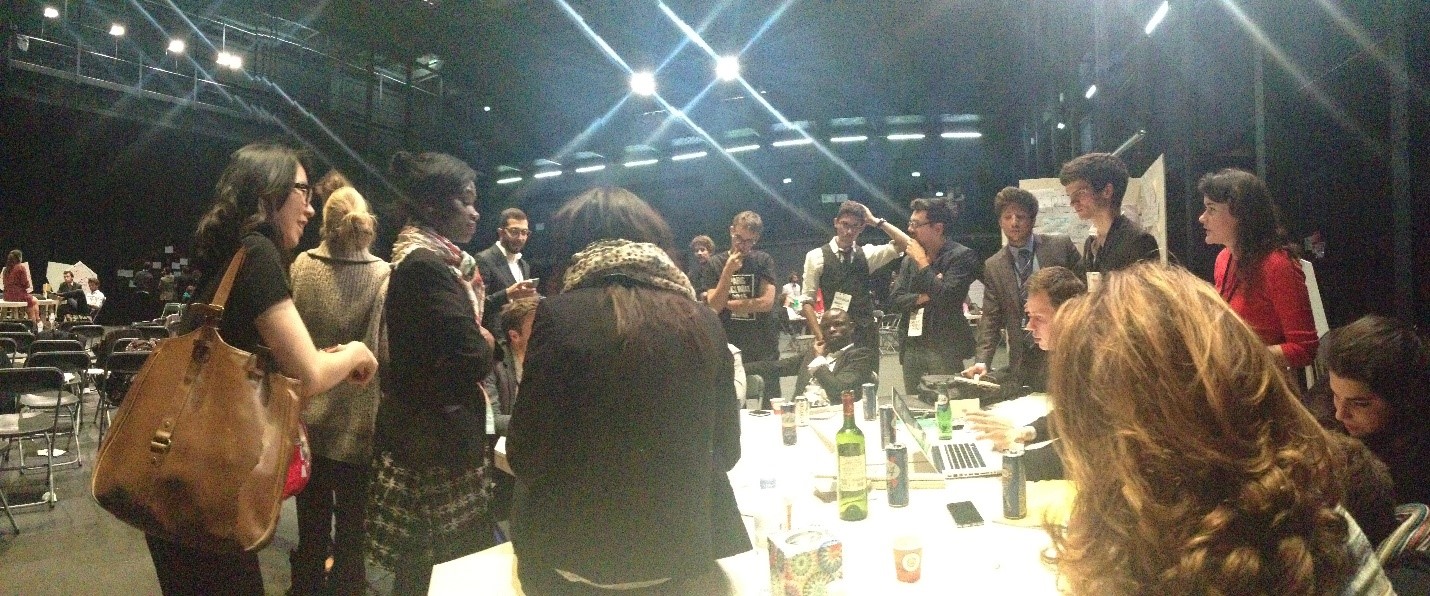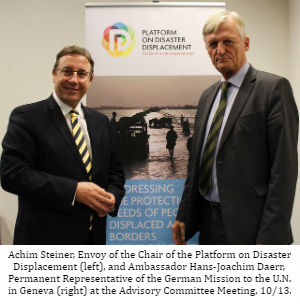By Richmund Sta. Lucia
Extreme weather patterns can be easily seen in floods. Severe storms, especially during the rainy season, cause record rainfall to inundate both cities and countryside alike. Storm surges, another weather abnormality, create havoc in coastline areas by pushing meters-high water from the seas towards land. Indeed, the problem of flooding is becoming more and more pervasive around the world. It is now commonplace to see in the news familiar places suddenly becoming like a scene in the post-apocalyptic movie Waterworld. From Africa to Asia, from the Caribbean to the US, floods and landslides invariably cause damage to establishments and crops, dislocates people from their homes, and claims countless lives.
In the Philippines, one of the most destructive floods it has experienced was when Typhoon Ketsana (locally known as Ondoy) struck Manila in September 2009. The precipitation was unprecedented: one month’s worth of rain was poured into the Philippine capital within only 12 hours. The torrential rains caused heavy flooding–Manila’s worst in more than 40 years. More than 80% of the city was submerged in water, hundreds of thousands were displaced, and at least 246 people were killed. The sad realization after the killer storm was that Manila was not prepared for the non-stop rains and the ensuing floods brought by Ketsana.
The Philippine government’s response to Typhoon Ketsana was to come up with measures that seek to prevent or mitigate the dire effects of flooding. On September 4, 2012, the Philippines’ National Economic and Development Authority (NEDA), the country’s socioeconomic planning body, approved the Flood Management Master Plan for Metro Manila and Surrounding Areas (Master Plan). The Master Plan aims “to provide sustainable flood management and safely control major flood events in Metro Manila” by undertaking specific priority structural and non-structural measures. The two main implementing agencies are the Department of Public Works and Highways (DWPH) and the Metro Manila Development Authority (MMDA). Its implementation until year 2035 was projected to cost an estimated $7.5 billion.
Recently, the World Bank and the Asian Infrastructure Investment Bank (AIIB) approved the funding of $500 million for flood management in Metro Manila. Under the Metro Manila Flood Management Project, multi-sectoral approaches will be taken to support flood control infrastructure along critical waterways by modernizing the Philippine capital’s pumping stations, improving solid waste management, and relocating informal settlers. This development shows that the Philippine government is serious in dealing with Manila’s flood problem. Accordingly, the project’s activities can be broken down as follows:
Component 1 – Modernizing drainage areas:
- Pumping Stations and Related Infrastructure. New pumping stations, including related infrastructure (drainage channels, flood gates, and trash racks), will be constructed and existing ones will be improved and modernized. The energy source will also be shifted from diesel to electricity.
- Asset Management Plans and Maintenance Equipment. Plans for asset management will be developed and operational manuals will be updated for pumping stations, associated waterways, and other drainage infrastructure. Specialized waterway maintenance equipment will be procured, such as floating dozers, couple pontoons, and remote-controlled cleaners for clogged drains. Modern equipment will be used to remove water hyacinths along rivers and canals which can then be reused for production of biogas.
- Water Retention. Water retention capacity will be increased by developing green infrastructure such as green roofs, permeable pavements, rooftop rainwater collection, and temporary retention of drainage water in public areas such as basketball courts and parking garages. Community activities within drainage areas will also be conducted for purposes of flood risk management and setting up of local warning systems.
Component 2 – Minimizing Solid Waste in Waterways:
- Improving Solid Waste Management in Project Drainage Areas. Neighborhood-level activities will be carried out near pumping stations, waterways, and drainage including improved solid waste collection services, community mobilization and awareness creation, incentive-based improved waste collection, and neighborhood upgrading (e.g., beautifying waterways and easements to discourage the indiscriminate disposal of waste into waterways).
- City-wide Waste Management Activities. Improved solid waste management will be promoted across the metropolis through large-scale information, education, and communication campaigns, development of an integrated management information system on solid waste, and formulation of a solid waste master plan for Metro Manila. Specific guidance will be given to the MMDA and to local government units in order to efficiently manage their roles with respect to waste management.
- Innovative Waste Management Opportunities. MMDA will use appropriate equipment to reduce residual solid waste from drainage areas which would otherwise end up in landfills. This may include shredding machines at pumping stations and waste processing equipment, for example, styro-filters that convert Styrofoam into activated carbon, which can then be used to purify water.
Component 3 – Participatory Housing and Resettlement:
- Resettlement of People Affected by the Project. Since some areas will be used as sites for new pumping stations, resettlement of communities that would be affected by the implementation of the project will be necessary. The government will undertake financial and other remedial measures for the relocated families by providing access to better housing, basic services, and building community organizations.
- Support to Past Resettlement. Due diligence will be conducted to process the needs of resettled communities. These include community-based infrastructure, livelihood programs, and local economic development.
Component 4 – Project Management and Coordination: The government will provide support services for the operation of Project Management Offices in DPWH and MMDA for purposes of better management and coordination of their respective functions. Such support includes payment of operating costs, provision of office equipment and materials, provision of training, knowledge sharing and peer-to-peer learning, etc.
In addition to the above approaches taken by the Philippine government, other suggestions come from the private sector. A set of sound suggestions were made by a leading Filipino architect who espouses the use of adaptive architecture. While accepting the geographic and climate situation of flood-prone Metro Manila is one thing, a rather positive way to look at it is to deal with the variables that can be adapted to expected extreme weather events that lead to severe flooding. Suggestions include, among others, designing houses by considering nature: if the location being considered to build a house is a coastal area, then the house should be built away from the coast if possible. The house must also have livable rooms two meters high above the worst flood line. Another method that was suggested is dry flood-proofing, where exterior walls and openings are sealed to prevent water from entering the house.
With the proper programs set in place and activities undertaken to deal with Metro Manila’s flood problem, the Philippine government strives to avert, or at least mitigate, the destructive impacts of floods like the one brought by Typhoon Ketsana. To be sure, proper laws and regulations must be set in place to manage flooding in areas especially those which are considered as low-lying, populous, and flood-prone. It must be emphasized, however, that these plans and activities would only be as good as their implementation and would also depend on how serious the implementing agents are.
In the U.S., it may be worth noting that flood management is among the “ghost rules” quietly withdrawn by the incumbent administration (see previous post). As President Trump, upon assuming office, imposed a freeze on pending regulations called “ghost rules” (i.e., those withdrawn from the rule-making process without public notice), the execution of important rules that deal with climate change adaptation and mitigation was inordinately delayed, specifically those rules aimed at promoting greater resiliency to floods. The point to be made here is that even though the U.S. national government seems to be unwilling to institute measures for better management of flood risks, it nonetheless might well be worthwhile to consider and explore the suggested approaches learned from Manila’s experience with Ketsana’s deluge. Besides, with or without the help of the government, our resolve to deal with the adverse effects of flooding must not be dampened.
Richmund Sta. Lucia, a candidate for an LL.M. degree at Columbia Law School, received his J.D. degree from the University of the Philippines College of Law and has worked as an attorney in the Philippines’ Office of the Solicitor General and private law firms. He has also been a lecturer in several colleges in the Philippines. His legal advocacy includes the promotion of renewable energy.



